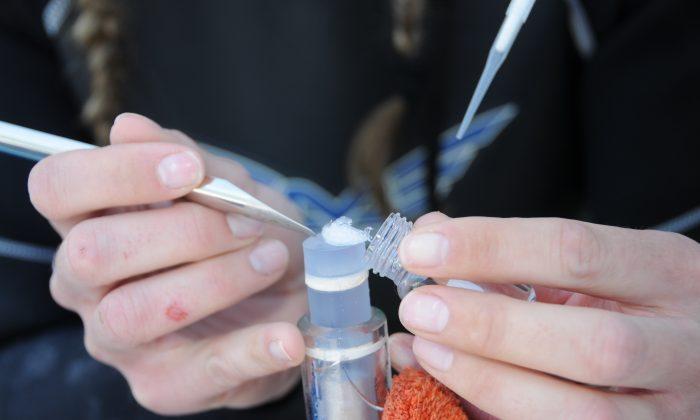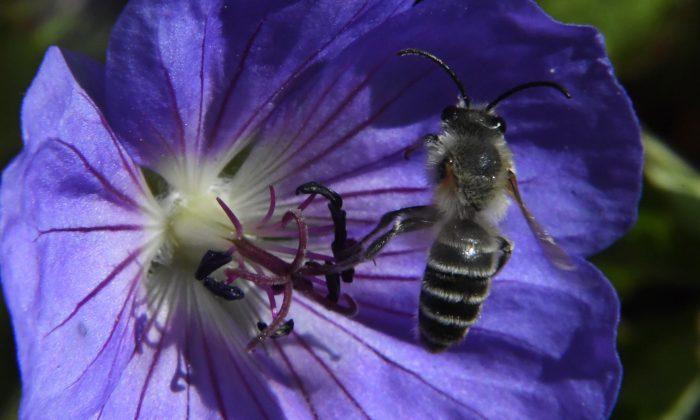Atlantic bottlenose dolphins, as an indicator species, are the windows into the health of their ecosystem, the ocean.
But how can scientists pull data from mobile, fast moving, seafaring creatures in their element? And what would a half-century of human impact, from farm and pharmaceutical runoff, to urban sprawl and industrialization look like in marine mammals?
That has been the long-held dream of Dr. Sam Ridgway, the “father” of marine mammal medicine at the National Marine Mammal Foundation (NMMF). He believed that by measuring a dolphin’s breath in a non-invasive way would reveal unique insights into the health of the biologic species, as well as the environment.
Like most university-led studies, it would take time, money, and expertise across an array of disciplines. Four years, three grants from the Office of Naval Research, among other institutions, combined with a team of engineers and chemists from the University of California, Davis, were needed to design the “dolphin breath sampler” device to catch the exhaled breaths and store the compounds to analyze in the lab.
For Dr. Cristina E. Davis, professor in the Department of Mechanical and Aerospace Engineering at UC Davis, her research into chemical and biological sensing applications with human beings made her the ideal candidate to lead the study. It was Frances Gulland, Ph.D., a researcher in dolphin diseases and a senior scientist at the Marine Mammal Center in Sausalito, CA, who brought Dr. Davis on board the project.
Together with NMMF, on which Gulland is a scientific advisor, they applied for the grants and sought partners to sample two classes of dolphins: One domesticated or “managed,” the other free-range or “wild.”
U.S. Navy Marine Mammal Program
“The study took four years with two groups of dolphins to develop a baseline,” Dr. Cristina Davis said in a phone interview. “I was introduced to NMMF, where some of the co-authors of the study were working with dolphins at the Navy’s Marine Mammal Program and who are very dedicated to the health and wellbeing of marine mammals,“ she said, adding, ”For wild dolphins, we needed to find a minimally invasive way to collect samples, outside of blood draws and skin sampling, not to impact or stress dolphins."
Their exhaled breaths became the focal point to collect those samples and examine the laboratory data.
“Dr. Sam Ridgway long speculated that dolphins’ exhaled breath diagnostics, which had previously been tried in humans, would provide a new, fast, reliable way to measure the health of the animals,” she said.
For that to happen, NMMF, the non-profit animal care arm of U.S. Navy Marine Mammal Program, which has cared for, trained, and deployed Navy dolphins in non-combat roles, provided the “managed” dolphins for the study in San Diego Bay. From there, they teamed with Dr. Randall Wells of the Chicago Zoological Society’s Mote Marine Laboratory in Sarasota, Florida. For the past 40 years, Dr. Wells has monitored wild dolphin populations along the coasts and bays of Florida.
Metabolites are the Key to Dolphin Breaths
“Abundant and meaningful metabolites were key to the study. In the managed dolphins, we found less variability in food, which is explained by them staying in the same place. The free-range dolphins showed a slightly wider variety of food sources, but were still similar to the animals under managed human care,“ Dr. Davis explained. ”We collected the breath samples with the Navy dolphins in the summer of 2011. Then in 2012 and 2013, we also collected field samples with Dr. Wells’ team from the wild dolphins in Florida."
Just like Dr. Ridgway, Dr. Davis saw the opportunity to measure dolphins’ health and ocean ecology as a “compelling idea.”
“For 52 years, I studied various things with dolphins. On breath analysis, we tried to push that along as time permitted for our animals,” said Dr. Ridgway, who is president of the NMMF board of directors. “We first used an underwater funnel collecting device, getting the dolphins to take deep breaths and hold them. The deeper the breaths, the longer the blood collects in their lungs. Their breaths are much more representative than terrestrial mammals that don’t take deep breaths.”
Both Davis and Ridgway explained that dolphins have “explosive breaths,” taking in and expelling four times more volume in a single breath than humans, because they dive deeper and hold their breath longer.
“In establishing a baseline to collect dolphin breaths to see how different and similar they were, metabolites are what we sampled,” Dr. Davis said. “Metabolites are the chemical reactions and processes in the body that produce different end products, which end up in exhaled breaths, urine, blood, and can lead to identifying minor colds, bacterial infection, cancer, pulmonary infections and exposure to environmental substances.”
The “dolphin breath sampler,” the passive, non-invasive device is called, “is a long sample tube, hollow on the inside to collect the breath as it’s exhaled. It’s packed with very cold dry ice,” she said. The sampler tube has a ’soft mask' that fits over the blowhole. “When a dolphin exhales out the blowhole, their breath is very warm like us. The breath condenses into a film, from a gas into a liquid, like a breath vapor onto a mirror. We collect it frozen in the tube to bring back to the lab.”
Scientists from Dr. Cristina Davis’ research group accompanied Dr. Randy Wells’ team for field studies, and collected “three to five samples” per trip, did multiple day trips, and then brought the samples to the lab in batches.
Dolphins’ Breaths as Biomarkers
NMMF veterinary epidemiologist, Stephanie Venn-Watson, said in another phone interview: “The study benefits from dolphins’ deep breaths. Indicators of health and disease that are in their blood, which is transferred to the air they have in their lungs. Amazingly, every breath is yielding 1,000 different compounds.”
Stephanie Venn-Watson directs the NMMF’s Translational Medicine and Research Program.
“Frances Gulland and Laura Yeates, formerly with the Foundation, started the study with Cristina Davis in 2010. The Office of Naval Research helped, as the study would serve a well-founded need and a desire to learn more dolphins’ health status,” Venn-Watson said.
On the results of the study, “We were pleasantly surprised how compound rich and very clean a dolphin’s breath is compared to a human. We were excited to collect and analyze the 1,000 compounds per sample,” she said. “This will allow us in the future to more easily monitor their health status.”
Stephanie Venn-Watson outlined the near-term goals of the study, including, “Wanting to see if there are differences when comparing a sick dolphin’s breath versus a healthy breath. We are in the next phase of a three-year follow up study to see the variation of breath over time. From there, we will look at the breaths weekly, their food, seasons, weather, age, and check the biomarkers in the breath that may be present before the onset of being sick. This is particularly helpful, because dolphins can mask illness until it’s quite advanced.”
The results of the study—Metabolite Content Profiling of Bottlenose Dolphin Exhaled Breath [Cristina E. Davis, et. al]—also produced some alarming finds of manmade chemicals that have made its way into the sea, including pharmaceuticals, industrial chemicals, fertilizer and pesticides runoff.
From Dr. Ridgway’s book, The Dolphin Doctor (3rd edition), he writes:
“By studying the metabolic and cholesterol responses of dolphins to dietary modifications, researchers may gain insight into human diabetes, improve the design of costly human clinical trials, and potentially discover biomarkers for non-invasive breath monitoring.”
The U.S. Navy and the marine mammal researchers appear to be on track. In the near future, when combined with GPS and big data analytics, they might be able to map and measure the health of the sea in more geographical meaningful ways than ever before.





